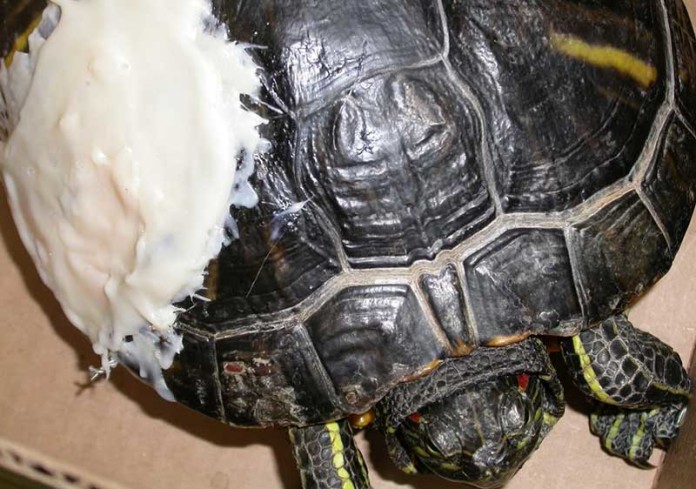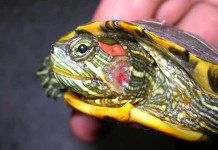Temperature problems with red eared sliders are one of the most common issues that uneducated slider owners have. Either the guy at the pet store failed to tell them about the proper way to take care of the slider and its temperature requirements, or they simply didn’t pay attention to the pimply-faced teenager that was just doing his job. Regardless, now you have a slider that has gotten cold and therefore, gotten sick. Temperature sick sliders can go off food or develop a respiratory infection, so what should you do?
Getting cold is one of those red eared slider problems that can easily be prevented. Turtles, like all reptiles, are ectothermic and therefore cannot regulate their own body temperature. They need to rely on their environment to regulate their temperature. If you live in an area where the room temperature is always 75 + degrees Fahrenheit, then you shouldn’t have any problems. But the majority of us prefer to not have things so hot all the time, so if you have a slider you have to have the proper heating to keep his tank—and therefore his body temperature—at the proper setting.
So let’s say the worst has happened and you’ve either failed to provide the proper heat or the heat source has failed and your slider’s temperature has dropped dangerously low. Sliders in the wild can handle a gradual cool down, as long as they can properly hibernate, but in captivity this is usually not the case. Your slider will die if he isn’t brought back to his normal temperature range. The best way to bring him back is with an ultratherm heat mat. Place this mat on over 1/3 of your slider’s tank so that it will raise the ambient temperature. In addition, use a heat lamp and/or artificial heat rock to heat his basking area to 85-88 degrees Fahrenheit. Sick turtles, in general, will instinctively seek out this warmer area of the tank to reach their preferred body temperature (PBF). Always closely monitor the temperature with a thermometer when you have a temperature sick slider.
Red eared slider’s water temperature is also important if he has been exposed to excessively cold temperatures. Though he won’t likely be looking to swim if he is temperature sick, you should still keep the water warm. In fact, you should raise the water temperature to 82-85 degrees if you have a sick turtle. You don’t want your sick slider to dive into icy cold (to him) water!











